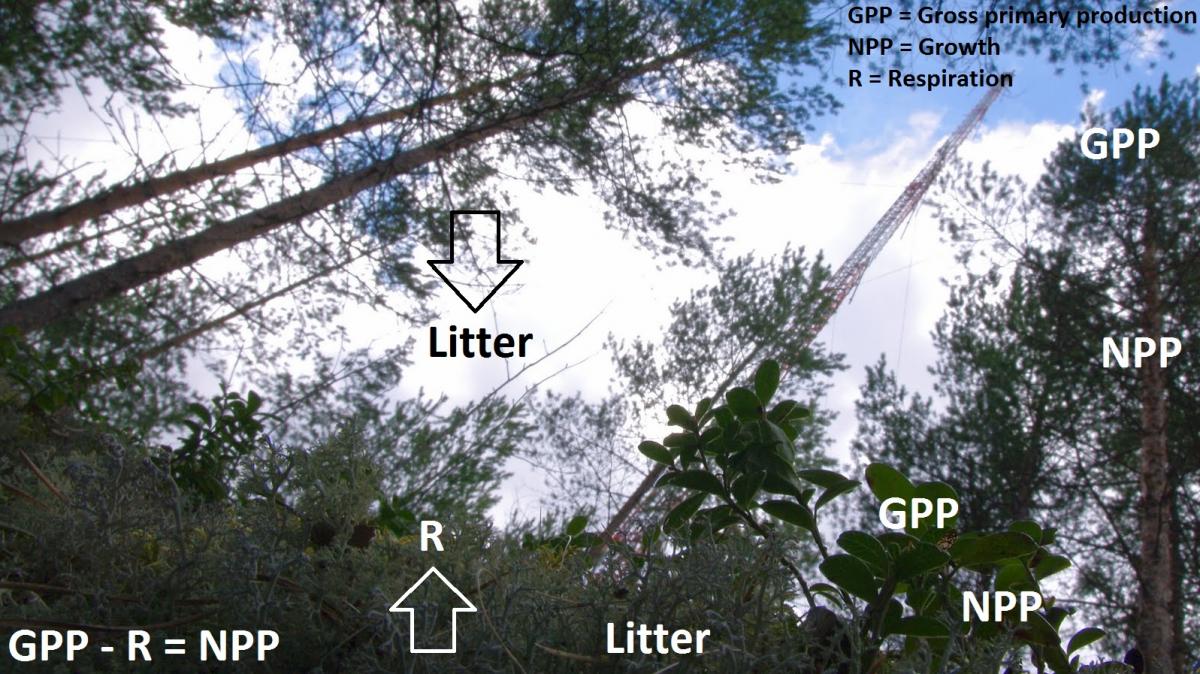The carbon used for ecosystem growth (net primary production, NPP) is eventually transferred to the soil in litter fall, root turnover and death of individual plants. In addition, trees notably allocate carbon to the root systems for root growth and root maintenance. Carbon is also added to the forest floor from leaching of dissolved organic matter from the canopy.
The total flux of carbon dioxide from the soil to the atmosphere is known as soil respiration. It originates from heterotrophic respiration when the dead organic matter is used for substrates for soil micro-organisms and soil animals (i.e. the soil organic matter is decomposed).
Autotrophic respiration originated from the respiration of roots is another major source of CO2. The share of the root respiration is roughly similar to that of heterotrophic respiration but the estimations from different studies are varying between 30-70%. In our studies we have observed that the annual CO2 flux from the soil corresponds to about 50-60% of the annualcarbon uptake (gross primary production, GPP)of a forest ecosystem.
The soil respiration rate is controlled by several factors such as soil temperature and soil moisture. Especially, the effects of increase of temperature on soil precesses such as soil respiration and nutrient cycle are currently studied due to ongoing increasing CO2 concentration and global warming. If the warming increases respiration of the ecosystem (R) more than it increases the carbon uptake (GPP), the growth of the ecosystem (NPP) will decrease.

